Wrocław on the beautiful blue Oder
We all know Warsaw, and Krakow is familiar as well. Lodz is less well known, but Poland's great unknown is Wrocław. However, the fourth largest city in the country is attracting a growing number of visitors and deservedly so. The city offers an exciting cultural calendar and the beautifully restored historic centre features fairytale-like gothic monuments and ochre-coloured baroque houses. Welcome to the new Prague.
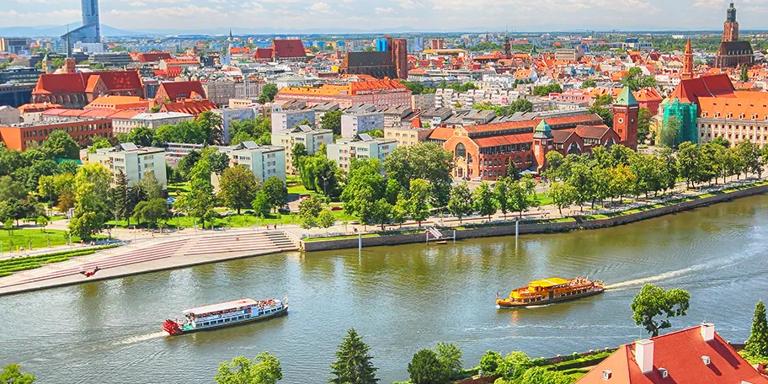
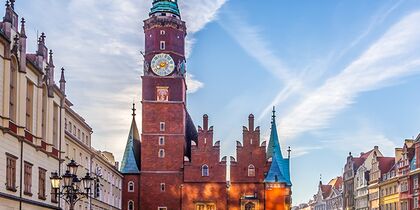
A fairytale-like market square
All roads in Wrocław lead to the Market (Rynek), the city's greatest pride and most important attraction. The size of eight football fields, the square is surrounded by baroque patrician mansions in ochre, salmon, baby blue and olive green. The centre of the square is dominated by the current city hall and the 13th century gothic Old Townhall (Stary Ratusz), which now houses the Museum of Folk Art. It is especially lively in the summer. Around the market is a multitude of terraces.
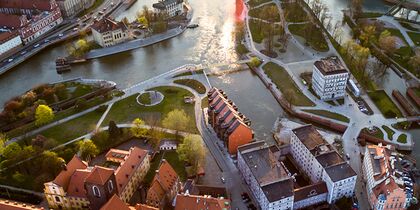
The islands of Wrocław
Wrocław is also known as the ‘Venice of Poland’. Although a slight exaggeration, there is certainly no shortage of water. The Oder river crosses the city and separates the medieval centre from the neighbourhood of Nadodrze. The river is dotted with a dozen islands, which all have a unique function. Wyspa Piasek features two churches, Wyspa Mlynska is home to nostalgic hotel Tumski, and Wyspa Slodowa boasts a city park with floating patios that look out on the old city. The gothic cathedral attracts the most attention on the former island of Ostrow Tumski.
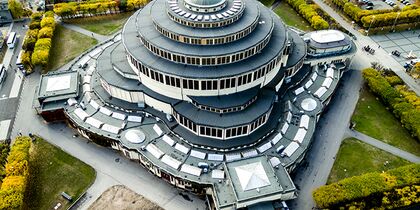
A modernist masterpiece
An event hall on the World Heritage List? That must be quite a special building. Designed by avantgarde architect Max Berg, the Hala Stulecia or the Jahrhunderthalle was completed in 1913. The hall can accommodate ten thousand visitors and is adorned with a 23 metre high dome. According to Unesco, the Jahrhunderthalle is a landmark in reinforced concrete and a textbook example of early modernism. See halastulecia.pl and centrumpoznawcze.pl for visitor information.
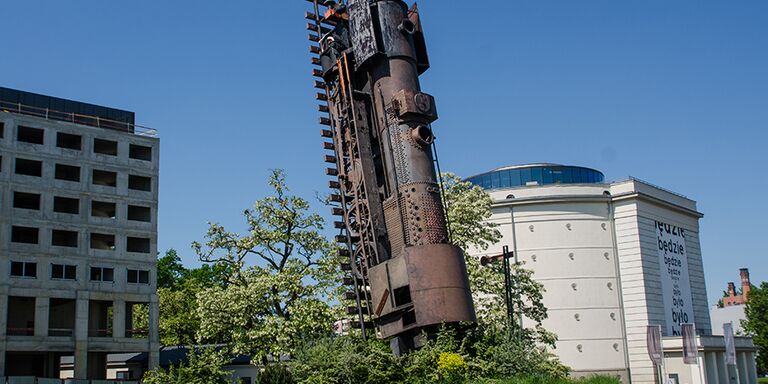
The cultural capital of Poland.
In 2016 Wrocław was the European Capital of Culture. The cultural offerings are vast and diverse and include museums, theatres, cinemas and festivals. The Museum for Contemporary Art showcases works by local and other Polish artists, displayed in a 25 metre high aboveground concrete bunker. The NFM Concert Hall is a fine example of modern architecture with spectacular acoustics. Film buffs will also get their money’s worth: Kino Nowe Horyzonty shows Polish films with English subtitles, and in the summer it hosts the largest film festival in Poland. Culture lovers will never be bored in Wrocław.
Discover other destinations in Europe
*The displayed prices are for one adult. All amounts are in KWD. Taxes and surcharges are included. No booking fee is applicable. Prices shown may vary depending on fare availability.
The weather forecast information is provided by World Weather Online. Air France-KLM is not responsible for the reliability of this data.













